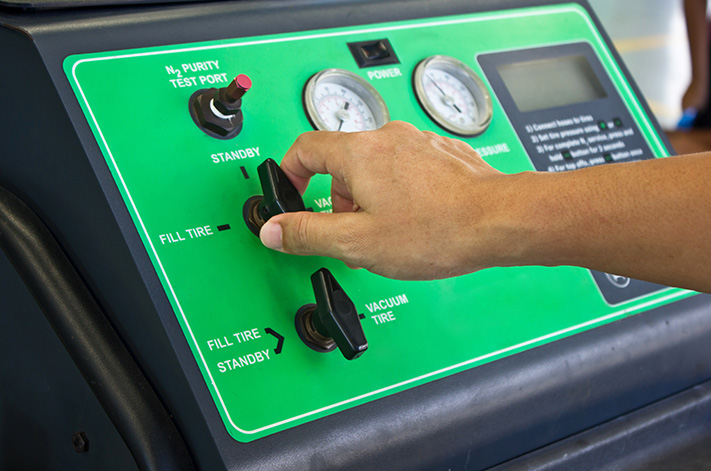
You may have noticed that, in addition to a fat set of chrome mags and a wheel alignment, increasing numbers of tyre shops are now offering the option to inflate your tyres with nitrogen instead of air. But is the extra expense of between $5 and $10 per corner worth it?
For a start, atmospheric air is already about 78 per cent nitrogen and 21 per cent oxygen, so by handing over cash for the service you’re actually only getting a little more N for your money.
| How To: Picking the right tyres for your car
The various outlets may tell you that with the inert gas inside, your tyres will perform better and last longer, particularly when operating over varying temperatures, but the beneficial effects may be minimal and hard to appreciate.
Any potential benefits rely on two basic principles, the first one being nitrogen’s resistance to leaking and the second is the lack of water vapour suspended in the gas, which is a happy by-product of the manufacturing process.
A nitrogen molecule is larger than an oxygen molecule which means pressurised nitrogen stays inside a tyre longer than the Houdini-like oxygen which escapes more readily over time. The theory is that nitrogen will maintain the correct pressure for longer particularly at the higher temperatures caused by enthusiastic driving, which can exacerbate the leakage.

While there may be some benefit, having nitrogen in your tyres is not a substitute for checking your pressures regularly.
When heated, nitrogen expansion is similar to oxygen’s rate of expansion so there is no clear advantage with nitrogen versus air until atmospheric moisture is factored in. When water vapour is heated by the action of high friction, load or hot weather, pressures can rise more significantly.
For nitrogen-filled tyres to have any benefit over air, the gas must be completely dry when pumped in and the tyre must be completely evacuated of air beforehand to ensure residual air and moisture don’t dilute the nitrogen gas.
| How To: Understanding wheel alignments
Tests have shown that, even with a small amount of moisture present in a nitrogen-filled tyre, pressures can increase more than when simply filled with air. Furthermore, the advantage of dry inflation gas is not limited to nitrogen, and the same benefits are associated with completely dry air as a filler.
Some companies have also claimed that nitrogen can improve ride quality as well as increased tyre life but there are no differences to the benefits associated with maintaining the correct tyre pressure for your car and driving conditions.
Nitrogen as a tyre inflation gas is used in high-end motorsport applications where the teams can ensure the tyre is entirely filled with dry nitrogen and where even relatively small changes in pressure can make a difference to lap times.
On the road however, it is unlikely the average driver will be able to tell the difference between minor changes in tyre pressures. And remember, nothing is a replacement for regular vehicle maintenance.




